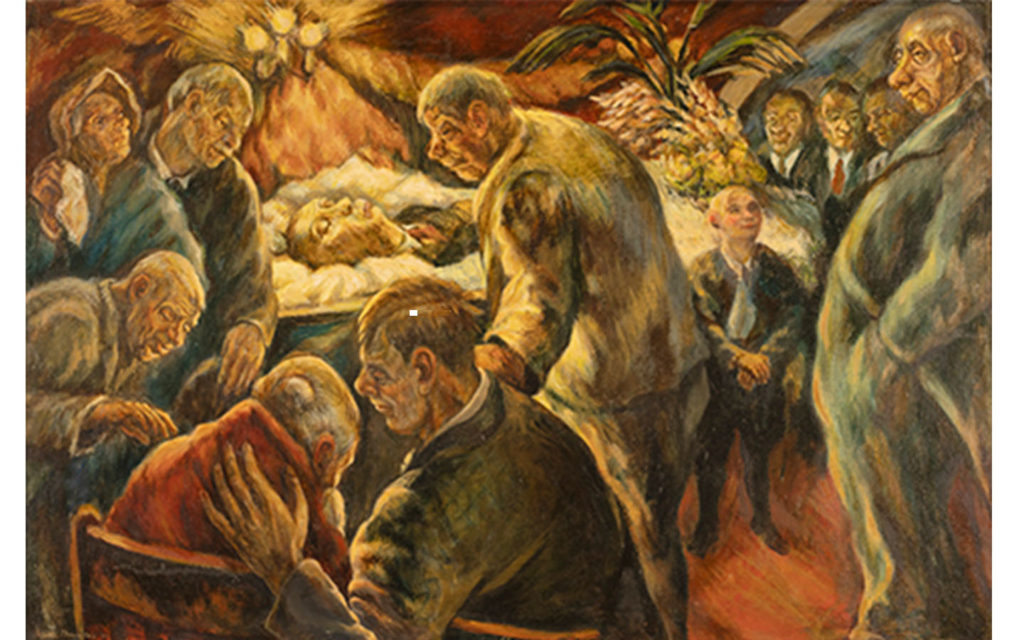What is it?
Artist
Charles W. Thwaites (Milwaukee 1904–2002 La Residencia, New Mexico)
Title
Alike in Trembling Hope Repose
Year
1940
Medium
Oil on canvas
Dimensions
23 1/2 x 35 7/16 in.
Credit line
Gifted 2011, Estate of Charles W. Thwaites
About the Work
About
Using lurid colors, shattered brushwork, and an illogically conceived space, Charles W. Thwaites created a hauntingly memorable scene of sorrow and loss. By the time he painted Alike in Trembling Hope Repose in 1940, Thwaites had established a reputation as one of the nation’s leading Realist painters. His customary subjects were bawdy burlesques, urban blight, and unremarkable interiors, but his focus on the “common” man is nowhere more poignantly expressed than in this painting. Its inspiration and title come from a stanza in Thomas Gray’s poem “Elegy in a Country Churchyard,” published in England in 1751:
No farther seek his merits to disclose,
Or draw his frailties from their dread abode,
(There they alike in trembling hope repose,)
The bosom of his Father and his God.
The poem is a meditation on death and remembrance as contrasted in the passing of an obscure versus a well-known person. Thwaites focused on mourners paying their respects to the ordinary man, one who had led a good country life. The composition is crowded with bulky, rustic figures. Light is the element that permeates and establishes the ceremonial nature of the gathering. The three-branched wall sconce—perhaps a symbol of the Trinity—opens up a space in the center to bathe the deceased in light; an arrangement of palm branches at the foot of the coffin suggests the theme of resurrection.
Stereotypical depictions of physiognomy and expression suggest character and class, from the well fed mourner on the right to the intimate triangle of the frail widow being consoled by her son, whose work-worn hand provides a comforting touch. Thwaites’s erudite literary reference underscores the commonality of the human experience across all classes.

